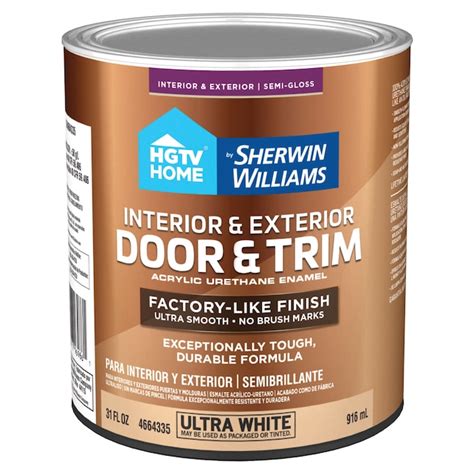Respirators are essential personal protective equipment (PPE) in various industries, including healthcare, construction, and manufacturing, to protect workers from airborne contaminants. With numerous types of respirators available, selecting the right one can be overwhelming. Understanding the differences between respirator types is crucial to ensure optimal protection against hazardous airborne particles and gases. In this article, we will explore the various types of respirators, their characteristics, and applications to help you make informed decisions.
The Occupational Safety and Health Administration (OSHA) and the National Institute for Occupational Safety and Health (NIOSH) regulate respirator standards in the United States. According to OSHA, respirators are required in workplaces where employees are exposed to hazardous airborne contaminants. The American National Standards Institute (ANSI) and the International Organization for Standardization (ISO) also provide guidelines for respirator testing and certification.
Filtering Facepiece Respirators (FFRs)
Filtering facepiece respirators, also known as disposable respirators, are the most commonly used respirators. They consist of a filter, a facepiece, and straps. FFRs are designed to filter out airborne particles, including dust, mist, and biological agents. These respirators are available in various filter efficiency ratings, such as N95, N100, and P100, which indicate their ability to capture specific percentages of airborne particles.
For instance, N95 respirators can filter out at least 95% of airborne particles, while N100 respirators can filter out at least 99.97%. FFRs are widely used in healthcare settings to protect against airborne pathogens, such as influenza and tuberculosis. They are also used in construction and manufacturing industries to protect against dust and other airborne particles.
N95 Respirators
N95 respirators are a type of FFR that can filter out at least 95% of airborne particles. They are commonly used in healthcare settings to protect against airborne pathogens. N95 respirators are also used in construction and manufacturing industries to protect against dust and other airborne particles. According to NIOSH, N95 respirators are designed to be used in environments where the concentration of airborne particles is up to 10 times the permissible exposure limit (PEL).
| Respirator Type | Filter Efficiency |
|---|---|
| N95 | ≥ 95% |
| N100 | ≥ 99.97% |
| P100 | ≥ 99.97% |
Powered Air-Purifying Respirators (PAPRs)
Powered air-purifying respirators (PAPRs) are designed to provide a higher level of protection than FFRs. PAPRs use a battery-powered fan to blow air through a filter, which is then delivered to the wearer’s facepiece. These respirators are commonly used in environments with high concentrations of airborne contaminants, such as in chemical plants and laboratories.
PAPRs offer several advantages over FFRs, including longer filter life, reduced heat buildup, and increased comfort. However, they require regular maintenance, including filter replacement and battery charging. According to OSHA, PAPRs are required in workplaces where employees are exposed to hazardous airborne contaminants in concentrations exceeding 10 times the PEL.
Self-Contained Breathing Apparatus (SCBA)
Self-contained breathing apparatus (SCBA) respirators are designed for use in environments with extremely high concentrations of airborne contaminants, such as in firefighting and chemical spills. SCBAs provide a self-contained air supply, which is stored in a tank and delivered to the wearer’s facepiece through a regulator.
SCBAs offer the highest level of protection against airborne contaminants, but they are also the most complex and expensive type of respirator. According to NIOSH, SCBAs are designed to be used in environments where the concentration of airborne contaminants is immediately dangerous to life and health (IDLH).
Key Points
- FFRs are the most commonly used respirators and are available in various filter efficiency ratings.
- PAPRs offer a higher level of protection than FFRs and are commonly used in environments with high concentrations of airborne contaminants.
- SCBAs provide the highest level of protection and are designed for use in environments with extremely high concentrations of airborne contaminants.
- Respirator selection depends on the type and concentration of airborne contaminants, as well as the wearer's specific needs.
- Regular maintenance and training are essential to ensure optimal respirator performance and wearer safety.
Respirator Selection and Use
Respirator selection depends on several factors, including the type and concentration of airborne contaminants, the wearer’s specific needs, and the work environment. It is essential to conduct a thorough hazard assessment to determine the required level of protection. According to OSHA, employers are responsible for providing respirators that meet or exceed NIOSH certification standards and for ensuring that employees are properly trained in respirator use and maintenance.
Proper respirator use and maintenance are critical to ensure optimal protection. This includes regular filter replacement, cleaning and disinfecting, and storage. According to NIOSH, respirators should be inspected before each use and regularly maintained to ensure optimal performance.
Respirator Fit and Seal
Respirator fit and seal are critical to ensure optimal protection. A proper fit ensures that the respirator seals tightly to the wearer’s face, preventing airborne contaminants from entering. According to OSHA, respirators must be fit-tested to ensure a proper seal.
Fit testing involves checking the respirator's seal using a variety of methods, including qualitative and quantitative fit testing. According to NIOSH, fit testing should be performed annually or whenever a new respirator is introduced.
What is the difference between N95 and N100 respirators?
+N95 respirators can filter out at least 95% of airborne particles, while N100 respirators can filter out at least 99.97% of airborne particles.
When should I use a PAPR instead of an FFR?
+PAPRs are recommended for use in environments with high concentrations of airborne contaminants, where FFRs may not provide adequate protection.
How often should I replace my respirator filter?
+Filter replacement frequency depends on the type of respirator, usage, and environmental conditions. Refer to the manufacturer's instructions for guidance.
In conclusion, understanding the different types of respirators and their applications is crucial to ensure optimal protection against airborne contaminants. By selecting the right respirator for the specific work environment and following proper use and maintenance procedures, workers can minimize their risk of exposure to hazardous airborne particles and gases.


